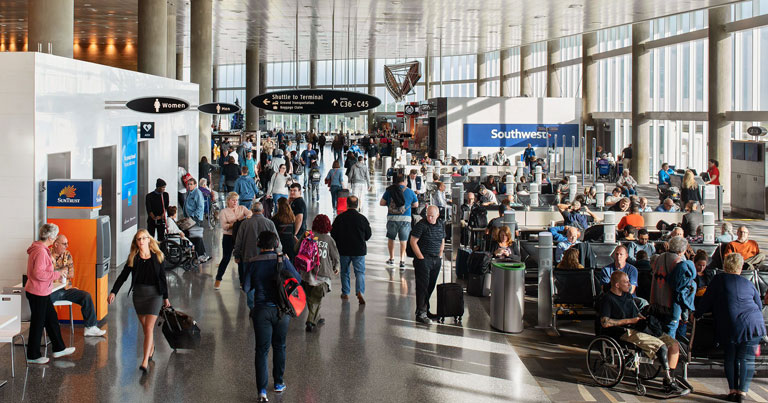
Tampa International Airport (TPA) has become the latest US airport to announce the implementation of facial recognition biometrics technology to streamline the passenger experience.
TPA will debut the technology this summer at three international gates at Airside F as part of a federal mandate to use biometrics for screening all departing international passengers. After a trial period, TPA plans to install the technology at 10 gates – seven at Airside F, two at Airside E and one at Airside C – by 2020.
Passengers can use the facial recognition technology without having to show their passport at the gate.
“This will enhance customer experience by speeding up the boarding process,” said Director of Guest Services Daniel Glennon. “Essentially, it’s an iPad on a stand that serves as a camera as you’re getting in line. Within a matter of seconds, it can determine your identification.”
Eventually, the screening will serve as both a passport and boarding pass so that the passenger doesn’t need to show any ID at the gate.
“Right now, it [biometrics] is on the edge of happening,” said Senior IT Manager Doug Wycoff, who is spearheading the initiative for TPA. “We’re moving in the direction of a one-stop process.”
TPA will also install electronic gates at the entrance to the Airside A shuttle this summer to test the concept for use at all four shuttle entrances. Passengers will simply scan their boarding passes at the e-gate to gain access to the shuttle, replacing the current system that requires manual scanning. E-gates allow TPA to go from two to four boarding pass scanning devices per airside, helping to speed up the process and making it faster for guests to get to their gate. If the pilot is a success, the e-gates will be deployed at the remaining three shuttle entrances in early 2020.
Wycoff says this type of technology is used in airports in Asia and Europe. It will help provide a quicker passenger experience, greater security and provides TPA with more accurate information passenger metrics. “It’s a big enhancement both for our passengers and the airport,” he said.






